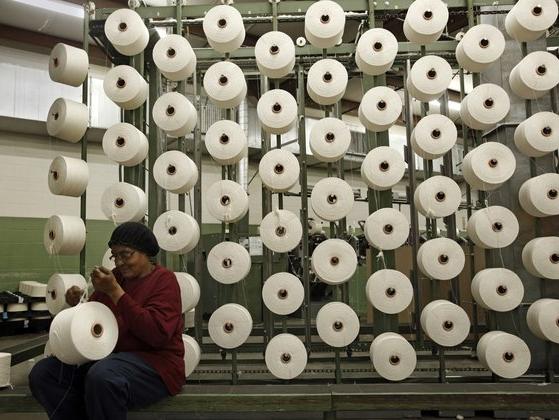
Section Branding
Header Content
Griffin Textile Plant - Leading a New Wave of Onshoring?
Primary Content

The last remaining textile mill in Griffin, GA could become a leader in the new “onshoring” movement taking place in U.S. Manufacturing.
Retail giant Wal-Mart recently announced it would purchase an additional $50 billion of U.S. made goods over the next decade.
1888 Mills in Griffin has become a major benefactor of this decision to return to U.S. manufacturers. 1888 Mills will produce “Made Here” towels for a projected 1200 Wal-Mart stores within the next two years. The increased production that comes with the Wal-Mart agreement means an additional 35 jobs for the Griffin, GA based towel maker.
Prior to the mass exodus of U.S. manufacturers, starting in the 1990’s, a major contract with Wal-Mart would have meant considerably more than 35 jobs. Today, manufacturing has replaced line workers with machines. Automation is the key to the recent “onshoring” trend. Yet despite the move away from cost-prohibitive labor, the move back to U.S. made goods does help.
According to the U.S. Department of Labor, the United States lost over 6 million manufacturing jobs during the two decades from 1990 to 2010. Since that time “onshoring” has helped bring back almost half a million of those jobs. This time many of the jobs are better paying and far more technical in nature. Gone are the days of working the manufacturing line straight out of high school with no technical training.
Some experts suggest that while “onshoring” is taking place many challenges remain for companies seeking to manufacture in America. According to a recent column for AreaDevelopment.com Bill Luttrell a Senior Locations Strategist with Werner Global Logistics is one of them, “Onshoring by U.S. manufacturers will be very limited. This is due to several factors, with the cost of labor being the main obstacle, as this makes up the largest portion of production costs. Taxation in the U.S. and heavy regulations are also major factors forcing companies offshore. Manufacturing skills are being lost in America and our education system is not meeting future demand. Absent a large, qualified manufacturing work force with globally competitive labor costs, manufacturing per se will not return. That isn't to say a few companies will not onshore back to the United States; some will, and they will grab headlines.”
Yet others see a rosier picture for the return of U.S. manufacturing. Steve Dwyer, President & CEO of Conexus points out that China is faced with 15-20 percent annual wage increases for factory workers along with 15% annual increases for power used in production. These rapid cost increases, along with the price of fuel necessary for shipping products around the world, means the financial incentives to produce locally (in the U.S.) becomes more cost competitive. The good people of Griffin, GA hope he is right!





